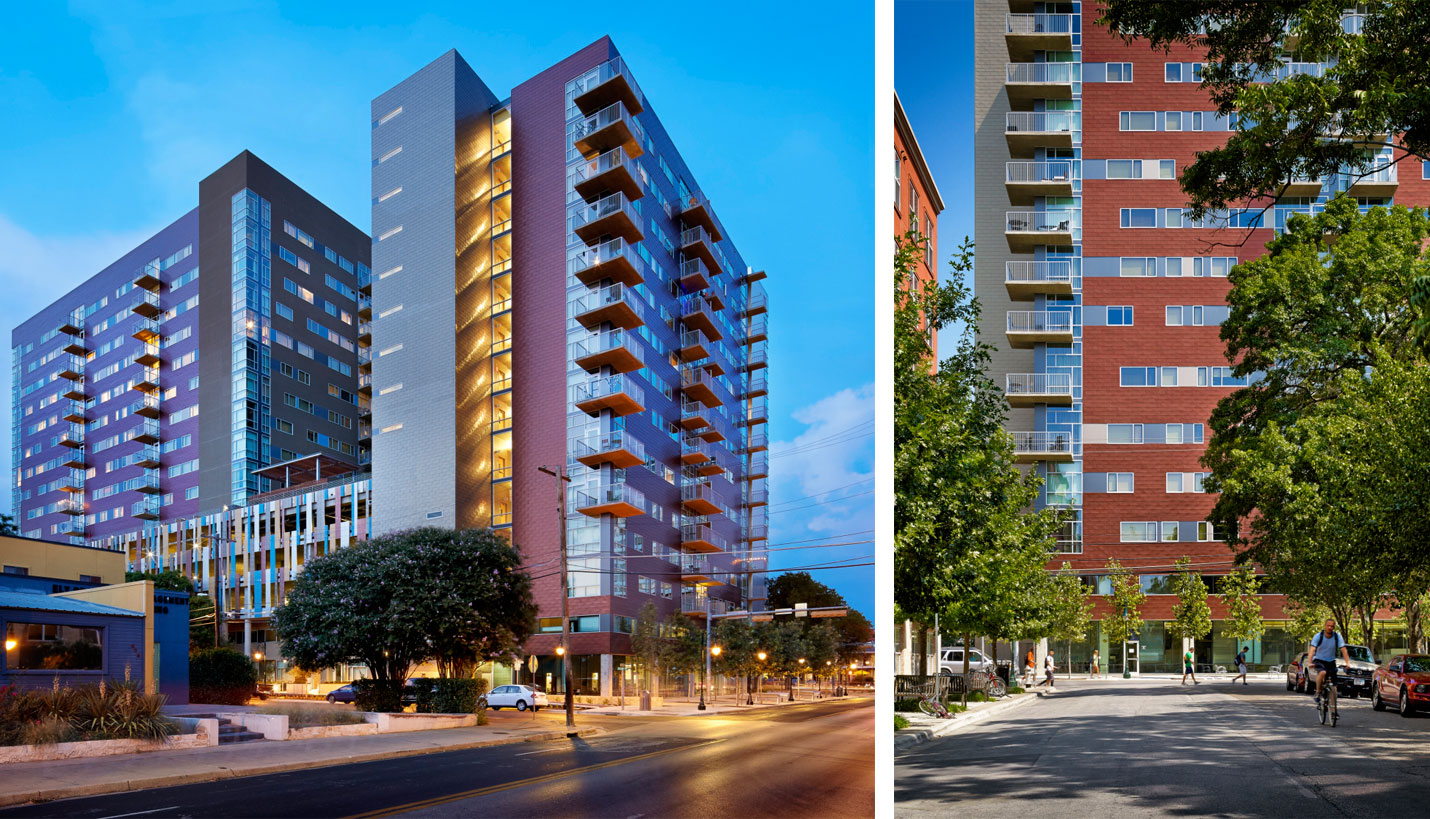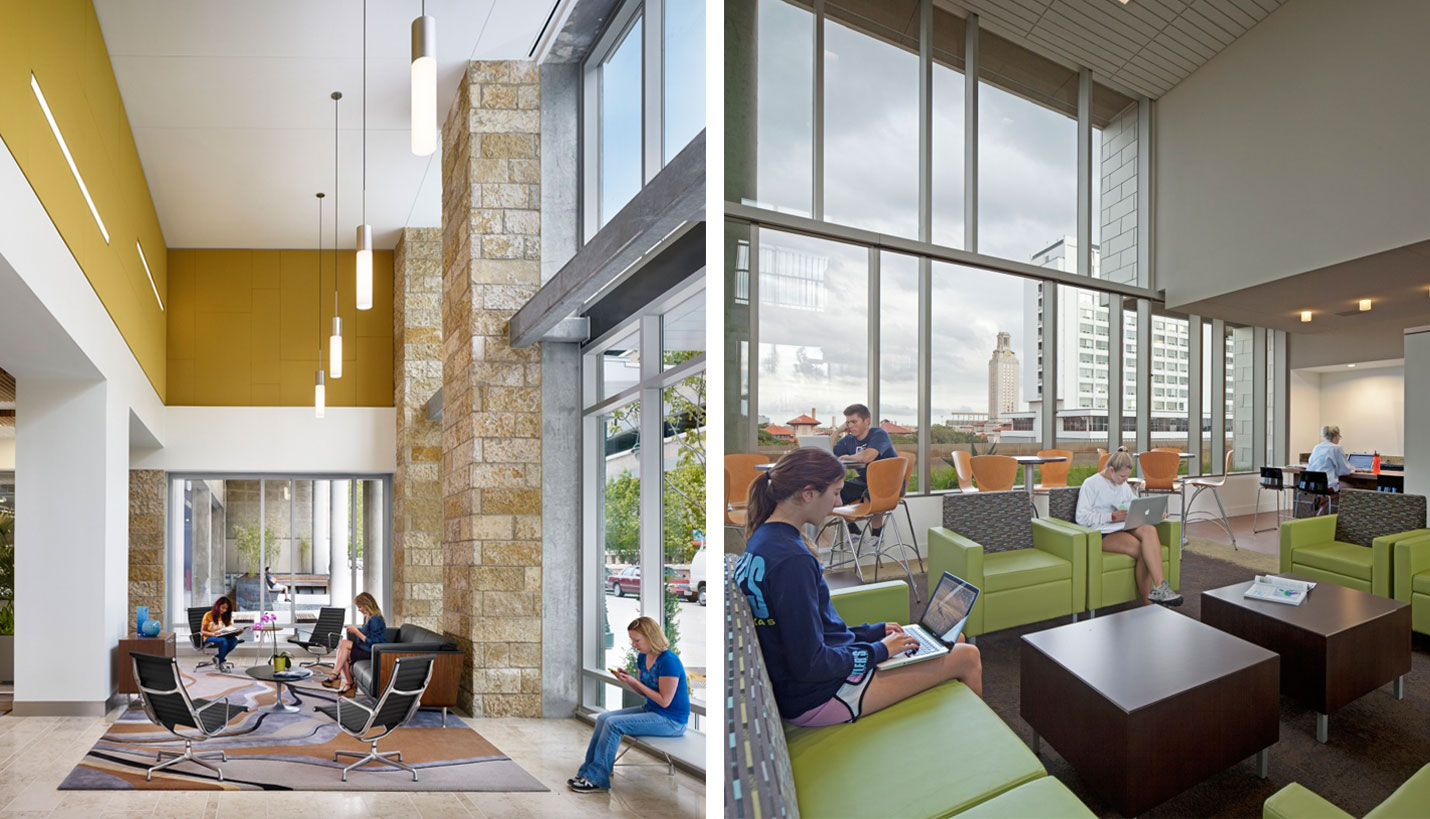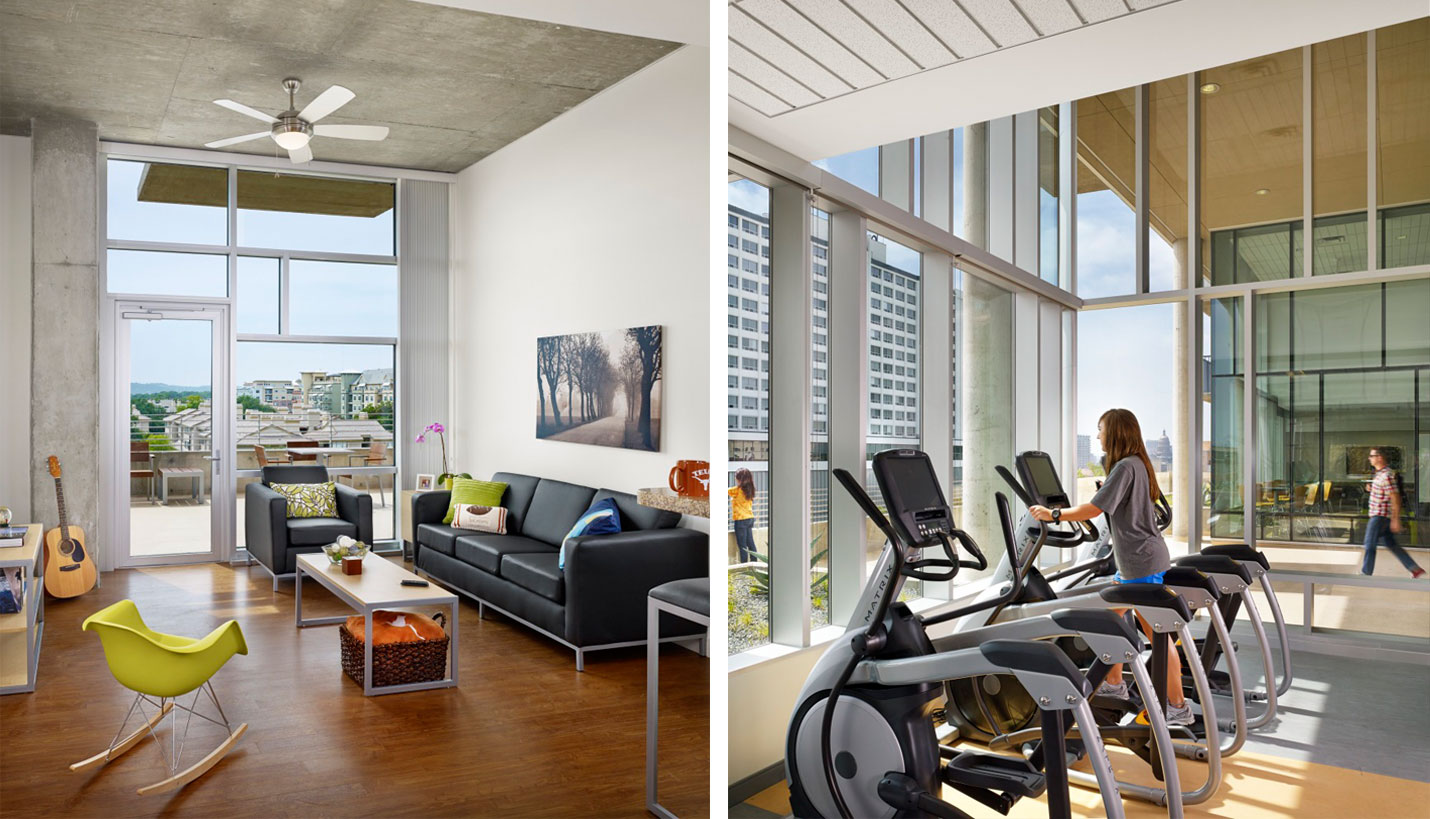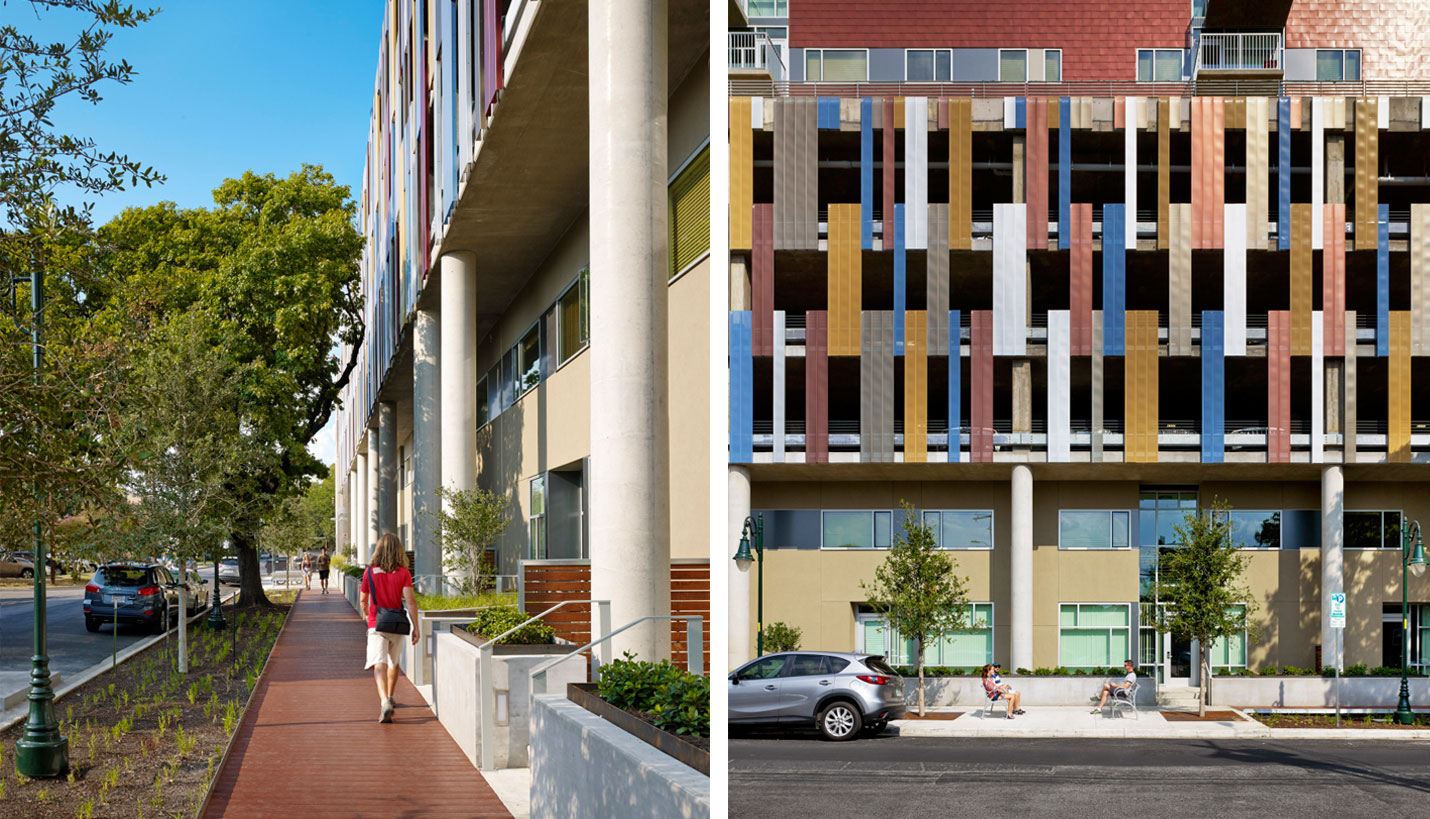Learning From What We Build
Larry Speck, Page Senior Principal wonders, "In a data-driven world, why don’t we, as architects, gather more data about the performance of our buildings—particularly in the form of post-occupancy evaluations? Wouldn’t it be a potent tool for advocacy of the importance of our profession if we could demonstrate the positive impact of what we do in a language our culture is accustomed to using?"
As lead designer for 2400 Nueces, a student housing complex at the University of Texas at Austin, Larry was particularly interested in the results of a post-occupancy evaluation (POE) of the project. Completed in 2013, the 13-story building was developed by EdR in partnership with UT and includes academic spaces, study spaces, recreational and fitness facilities as well as UT’s International Student Offices. Of the current residents,132 answered the POE questionnaire which addressed multiple topics about their satisfaction with the building–what was done right, what fell short, and what they would recommend.
Larry shares, "From that survey, four key findings emerged:
1. A full 26% of respondents said their GPA went up since moving to 2400 Nueces. A primary goal in designing the building was to create a fun, wonderful place to live, but not an Animal House. Much of student housing in the West Campus, where the project is located, is notorious for environments that are not conducive to work and study. Along with EdR, we paid a lot of attention to making a place where social life is tempered by an emphasis on good live/work environments. For example, we intermingled various unit types so that the 4-bedroom units (which tend to be dominated by the more raucous male population) would not be clustered on one hallway and reinforce a “party” lifestyle. Diverse neighbors tend to temper extreme behaviors.
2. Another question asked, “How about your friendships – are they better, the same or diminished compared to other places you have lived?” Here, 44% said their social relationships were better. This is what college is about: friendships and connections. How does a building support these? In part, through making all of the shared/social spaces great places to hang out and interact—mixing in single-loaded corridors and outdoor passages, creating memorable social and recreational spaces with great views and good indoor/outdoor access. At 2400 Nueces those places where casual encounters occur generally have good daylight and ample space for sticking around, not just passing through.
3. When asked, “What effect has living in 2400 Nueces made in your life compared to other student housing?”, a resounding 67% said it made their lives better. Many of the respondents stated they like the strong architectural character, the large windows and the colors of the building.
4. And tellingly, in response to the question, “Would you recommend 2400 Nueces as a place to live while at UT?”, a full 100% said "Yes".
This specific POE gave us some very positive responses and, thus, some evidence to take to the next project about the potential for architecture to make lives better. But even if evaluation results are not so good, they can often be very instructive and a tool for learning how to make our buildings more supportive and productive.
EdR is one of the most enlightened developers of student housing in the country. They have done an impressive job both in building and operating 2400 Nueces, and the POE survey supports that. Page will benefit from their expertise and from the POE’s assessment of its impact in designing future student housing projects."
03/16/2015
People
- Cory Boden
- Robert E. Burke
- Brent S. Ganzer
- Breanne Hanson
- Bryan A. Haywood
- Michael W. Henry, Jr.
- Shawn-Marie Henson
- Sara Ibarra
- Denny Kumm
- Joseph P. Moore
- Brian D. Roeder
- Sana Sabharwal
- Talmadge Smith
- Lawrence W. Speck
- Chet Weber
Blog Resources
Related Posts
- Trends In Student Housing Programming, Design
- Raising The Bar: UCCS Village at Alpine Valley
- Dining Facility Gets Gold Star
- University Residence Halls Achieve LEED Gold
- 2400 Nueces Wins Green Award
- Social Studies: Enhancing Student Lives
- Building High-End Student Housing May Have Huge Social Repercussion













